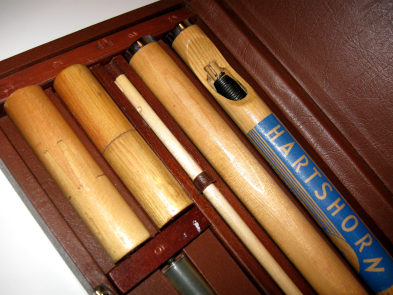I came across this ad for the Hartschorn Roller Company. Obviously this was many years before today’s concerns about child safety.

In 1864, Stewart Hartshorn patented an improved design using a ratchet and gravity pawl. This spring roller window shade was the forerunner of today’s roller shades as it used a spring mechanism to allow fabric to be rolled up or down. The spring roller window shade became very popular in America and several other production plants were opened in the early twentieth century.

According to Cora Hartshorn’s 1946 account of her father’s ideal community, A Little History of Short Hills (published by the Millburn-Short Hills Historical Society), Stewart Hartshorn “had obtained a basic Spring Shade Roller patent in October 1864, for his invention and was manufacturing shade rollers.”
Additional biographical information about Hartshorn, written by Hartshorn descendant Derick Hartshorn, can be found online, where we learn “[Stewart Hartshorn] entered into business with his father at the age of 17 to begin manufacturing the spring shade roller which had been patented by his father, his uncle, John, and brother, Henry. The business was moved to New York City after the death of his father. The death of his brother left Stewart in control of the company which he would head until his death 77 years later.
“There were many types of window shades on the market by the time of the civil war. Between 1822 and 1873 over 75 patents had been issued for window shades, rollers and other parts. Stewart Hartshorn worked to improve his father’s crude spring roller, and in 1864 received patent number 44,624 for a design introducing the rachet and gravity pawl. The design was in use until the recent advent of blinds.
“In 1872 the New York plant was moved to East Newark, N.J., the business growing until the Hartshorn shade crowded all others off the market, not because it was superior, but because of the maker’s business initiative and advertising ability. The manufacturing facilities were increased with a new plant in Harrison, N.J. In 1939 operations were transferred to Muskegon, Mich., where he had begun other plants. In later years the business grew, adding plants in Oswego, N.Y., and Toronto, Ontario. He gave up active control of the business in 1925 and turned over the reins of the business to his son, Stewart Henry Hartshorn.
“Further business investments included a cotton mill in Goldville, S.C., and a real estate development in Short Hills, N.J. He acquired 1,552 acres in Millburn Township and an additional 211 acres in Springfield Township which resulted in a planned suburban community. His goal for a planned community was based on ‘a harmonious community for people who appreciate nature.’ His plans included some of the first water and sewage systems in the state. Esthetics and planned development were the guiding principals of his ethic.
“He founded the Short Hills Water Co. which supplied the new community as well as Elizabeth, Springfield and part of Millburn. For some years he operated a quarry and a saw mill which supplied materials for the homes in the community. Civic and community minded, Stewart Hartshorn was a member of the Rotary Club, the Short Hills Club and the Baltusrol Golf Club of Short Hills. Always keeping abreast of world affairs, he was an avid fisherman and loved nature and art.”
In the collection of the Millburn-Short Hills Historical Society is the salesman’s sample Hartshorn roller window shade kit. The sample kit shows the perfected spring mechanism of the roller, a peek inside the roller and samples of wood joining techniques used for the wood roller. Of particular note is the label on one of the Hartshorn rollers, which features a leaping deer. The logo is a reference to the Hartshorn name; the hart is a small deer and the derivation of the name is the horn of a hart, or the hart’s horn—which is how the name should be pronounced.

